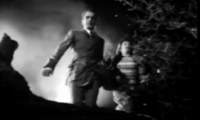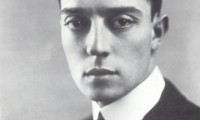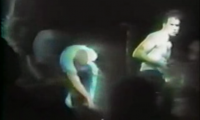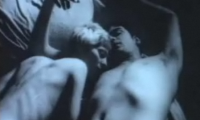I can isolate the exact moment I became conscious of how my memory is intimately tied to images. On my way home from elementary school one day, my eye fell upon a certain flowering hedge that lined one of the suburban yards. In a single beat, I experienced a complete recall of what I’d been thinking about the last time my attention had settled on this cluster of branches, several days or weeks before.
A memory of a memory is an especially slippery piece of road to navigate, and I can’t say now what those thoughts were that returned to me like a boomerang or a delayed echo — I think I had been trying to understand the behavior of a mean girl in class -— but I do remember the deep pleasure of discovering a new skill that felt like a party trick. If I attached an idea or bit of dialogue to a picture, then maybe I could retrieve it at will.
As I write this, I realize how obviously connected it all is to what I love about poetry.
When I discovered YouTube a few years ago, I began to use it almost exclusively to search for two kinds of material: Things I had heard about but had never seen and things I had seen a long time ago and wanted to confront again.
One of the more interesting lessons I have learned from watching clips from the second category is that the images in my mind often had broken free from their source and taken on lives of their own, lives that didn’t always resemble their original context very closely.
When I was in college, I took a film class in which we studied Jean Cocteau’s beautiful and dreamy “La Belle et La Bete.” My professor explained how, in an early scene, Cocteau had placed his actress on wheels in order to show Beauty moving effortlessly down the corridor that leads her into her new life with the Beast. The filmmaker’s innovative deception and its effect stayed with me, so much so, that it popped up in a poem I wrote more than a decade later.
One night, while staring absently at a small brass bell in my bedroom, the object began to look like a female figure to me, its tiny, ringed handle looking like an empty head on top of an armless, barely-there torso. The way the bell swept out in a fluid line to a broad base made me think first of a fertility fetish —- those goddess dolls with shrunken, featureless heads and enormous, exaggerated hips — and then of the French artist’s Beauty, with her long, full skirt covering the wheels under her feet.
THE BRASS BELL
Cocteau’s Beauty glides
in silver-screen brilliance
down a river of light.
It’s a trick. Her ball gown
conceals roller-skates.
An off-camera push
and she floats along singing.
Her face a stretched canvas,
she’s an ancient fetish doll,
all tits and womb.
The way I remember it,
her voice is a brass bell ringing,
a voice high enough to change
the shape of the human body,
to fill the cupboards with apples.
Your bed vibrates with the secrets
you keep sealed inside your skin.
Recently I wanted to go back to that scene from “La Belle et La Bete” to check whether or not it held up to my memory of it. I managed to track down the appropriate sequence on YouTube and as I watch it here, again and again, it feels both familiar and alien.
Jean Cocteau, “La Belle Et La Bete” (1946)
Is anything really the way we remember it? Of course not. Once we start associating images with ideas, we are haunted by the shadows they cast in our minds, and nothing, as we learn to see this way, is ever the same again.
– Damian Rogers






